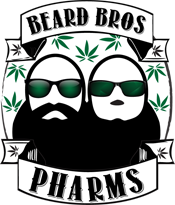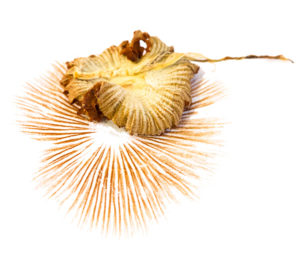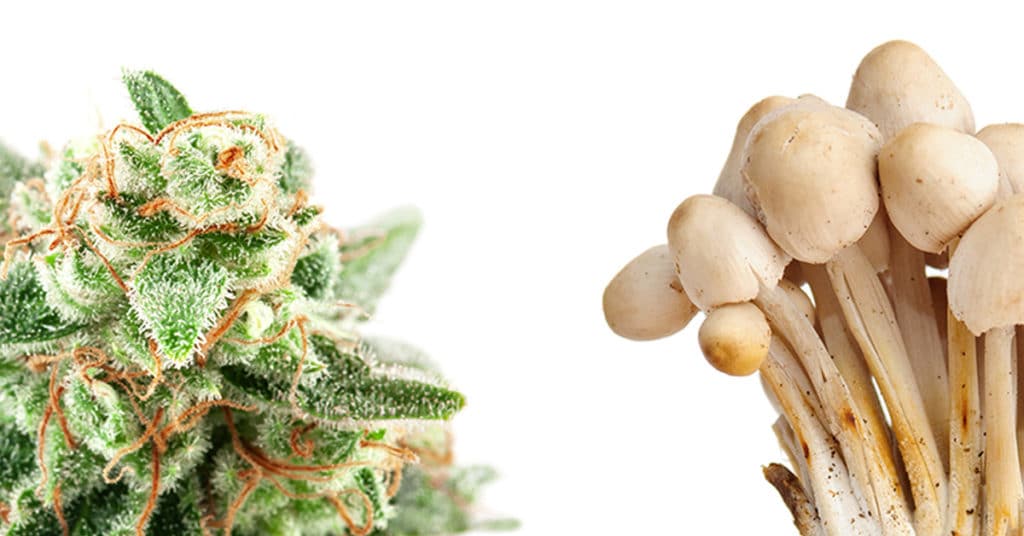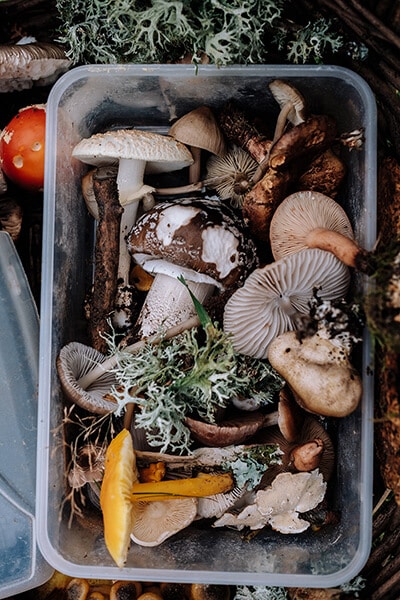
Getting your hands on psychedelic mushrooms has usually gone down one of two ways; either you knew a dude that knew a dude that could score you a bag of who-knows-what for a fluctuating price, or you were brazen enough to venture out into nature in a search for yourself, flipping cow patties like your ancestors once did.
The Feds still consider Option A above to be trafficking a Schedule I substance, despite the rising tide of psilocybin decriminalization efforts underway in literally hundreds of cities nationwide and, let’s face it, not all of us are cut out for seeking, finding, and then properly identifying and harvesting “safe” psychedelics in their natural habitat.
So, what is an eager psychonaut to do?
With so many of us on these personal quests to strengthen our own mental health and with the flow of information at an all-time high, we believe that there has never been a better, or more important, time than now to grow your own psychedelic mushrooms.
In roughly two months’ time, with a total budget of around $300, you could have your own homegrown shrooms ready to microdose, macrodose, or whatever dose floats your boat.
In this introductory article, we’ll go over some common mycology terminology, we’ll give you a simple shopping list of items you can likely find around your own hometown, and we’ll go over some of the basics of creating the proper set and setting to cultivate your own mindbending trip.
COIR, SPORES, VERMICULITE… OH MY!
Before we go any further, we are going to define some of the terms laid out below that most readers are likely not familiar with.
Abort – This refers to a mushroom that just quits growing, failing to reach maturity or usefulness. It is common, unfortunately, to lose a portion of your overall yield to this.
BRF – Brown Rice Flour. Just ground up brown rice commonly used as a jar additive.
Cake – Refers to the growing medium that the spores will be injected into and the mycelium will grow from. Commonly consists of a mixture of BRF, water, vermiculite, as well as whatever other ingredients the grower feels may be beneficial for yield or potency.
Cap – The head of the mushroom, typically flat or conical in shape in psilocybin-rich strains.
Coir – The hard, outer husk of a coconut is used for its anti-microbial properties as well as its exceptional water retention.
Colony/Colonize – The process of microorganisms coalescing to form the mushroom root network across a grow medium, or cake.
Fruit – This refers to every part of a growing/mature mushroom that appears above “ground”.
Gills – The ridges on the underside of a mushroom cap where the spores are harvested from.
Hygrometer – A device that measures humidity.
Hyphae – Tiny strands of tissue released from the spores that fuse together to join their parental nuclei to mate. This process repeats ad infinitum to create mycelium.
Inoculate – The act of injecting mushroom spores into a prepared (sterile) substrate or growing medium (cake).
Mycelium – The portion of the mushroom that grows below “ground”. Just as plants have roots, shrooms have mycelium. If you want to have your mind blown, start researching this term. There is an entire conversation happening down there!
Perlite – Volcanic glass in the form of white, porous, beads used to promote higher humidity and encourage robust fruiting in your grow chamber. Lightweight and sterile, it is often used in other forms of soilless ag like… tomatoes 😉
Pinning – The first visible growth of mushroom heads.

Print – Mushroom spores can be collected on a sterile surface by using the underside of the mushroom cap to make a print.
Psilocybin/Psilocin – The active psychedelic compound found in some forms of mushrooms.
Rice Cake – See “Cake” above. Not the same thing as you’d eat from the grocery store!
Spores – The mushroom version of the seed. The fruit of the mushroom growing above “ground” is essentially just a sex organ, each one containing millions of these spores used to propagate the species.
Syringe – Spores can be collected from a spore print and added to a water in a syringe for future inoculation. You can buy spore syringes pre-loaded or make your own once you have a strain that you love.
Strain – Just like with cannabis, there are different strains of psychedelic mushrooms, each delivering its own unique effects. Also as with cannabis, various phenotypes can exist within a certain strain. When you find one that works best for you, you’ll be glad you can grow your own.
Veil – As a mushroom grows, the cap is attached to the stem but the two are gently pulled apart leaving a light veil of growth between them. Monitoring this process is usually a big key to a successful harvest.
Vermiculite – Like perlite, this lightweight, water-absorbent substance is commonly used as in ingredient to an airy, breathable cake or growing medium for the mycelium to thrive in.
TRANSCEND TIME & SPACE… AFTER A TRIP TO THE HARDWARE STORE
Ok, we mentioned a good starter budget of around $300. You can spend less. You can certainly spend more. Avid mushroom cultivators often find themselves $1000 deep, or more, into their hobby by the time their ideal setup is complete. The good news is, many of the items that we are going to list are things that you really only need to buy once, so they pay for themselves pretty quickly.
There are complete grow kits available for sale online but by creating your own list and building out your own grow, you will likely save a few dollars and have a much better understanding of what role each component on your list plays in the process.
As with any sort of farming, different people have different methods for optimizing their crops, but when growing psychedelic mushrooms the two most commonly used teks (techniques) are known as the Monotub Tek and PF (Psilocybe Fanaticus) Tek.
Both are used for entry-level indoor cultivation and many of the same principles apply to each tek. Especially as a beginner, it really comes down to whether you prefer to use a manure-based substrate or not.
Here are the basic, everyday items that you’ll need to get started for each. You can find this stuff at grocery stores, pharmacies, hardware stores, and sometimes even dollar stores.
MONOTUB TEK
– Tupperware Bin Clear $15
– Contractor Style Garbage Bag Black $5
– Poly Fill $36
– 2” Hole Saw Drill Bit $15
– Manure Based Sterilized Substrate $25
– Cooling Fan (optional) $18
– Timer (optional) $25
– Fogger/Humidifier (optional) $45
– Hygrometer (optional) $45
– LED Light Bar (optional) $17
– Injection Port Bag $20
– Psilocybe Cubensis Spore Syringe $25-55
TOTAL: $200-$320
PF TEK
– Brown Rice flour 5# Bag $13
– Foil Heavy Duty $3
– Disinfectant $3
– Timer $25
– Micropore tape$ 3
– Tupperware Bin Clear $6
– Isopropyl Rubbing Alcohol $3
– Large Tote Clear $10
– Desiccant 2 bags $6
– Large Bin Clear $8
– Distilled Water $1
– Clorox Bleach Cleaner $3
– Case of ½ Pint Mason Jars $14
– Vermiculite $6
– Water Spray/Mist Bottle $1
– 2x 12 Gallon Totes $14
– Shoulder Length Gloves $2
– Latex Gloves $11
– Perlite 4 Cubic Feet $20
– Surgical Mask $3
– LCD Thermometer $6
– 50w Aquarium Heater $8
– Scalpel $1
– Daylight Light Bulb 65k $6
– Anti-Bacterial Soap $1
– Hand Sanitizer $1
– Measuring Cup, Mixing Bowl, Strainer $20
– Alcohol 90% $2
– Butane torch or lighter $2-30
– 2 spore syringes ~$50
TOTAL: $220-250
Get examples of detailed step-by-step instructions for PF Tek HERE, and for Monotub Tek HERE. Again, this is for a basic, beginner setup, but one that will bear a lion’s share of potent homegrown shrooms if put to use properly.
As far as your timeline goes, you can expect to see significant mycelial growth within a week or two of inoculation, and, in most cases you’ll be harvesting your first batch of mushies less than 60 days from that inoculation date.

Regardless of what that dude who your friend sort of knows might be charging for an 8th of “magic mushrooms”, you can realistically see yields of your own homegrown version that might cost you 50-100x on the street compared to what you spent in cultivation costs. Again, once re-sterilized, almost everything you invested in is being reused over and over saving you money, time, and peace of mind.
Once properly dried, the psilocybin in your mushrooms will stay active for months or years, or really indefinitely if kept frozen.
We cannot stress enough how important sanitation and sterilization will be in this entire process. You might think you live a clean life in a clean environment but unless you take the extra precautions laid out in the teks recommended above, the only trip you’ll be taking is back to Ace Hardware to start over again.
Every step in the process should involve heat, alcohol, or both to ensure that absolutely zero contaminants are introduced to your grow chamber. As a new grower, your best bet for success is to be hypervigilant about cleanliness. It might sound sort of ridiculous when talking about a fungus that literally grows out of shit, but this is a crucial aspect that must be taken seriously.
THE CONNECTION
There are certainly parallels between the trail that cannabis has blazed into the mainstream and the one that psychedelics like psilocybin are currently on, and it runs much deeper than “getting high”.

There is a widening desire to return to nature, to a simpler way of life rooted in self-sufficiency, meaningful culture, and genuine brother and sisterhood. Weed and shrooms have been cast for decades as “Gateway Drugs”, but more and more people are realizing that all of those things that they desire are somewhere on the other side of that gate.
Unfortunately, as we are now seeing with legal cannabis, many of those whose curiosity finally got the best of them could be too late to the party, showing up only to find shelves full of expertly marketed boof that fails to live up to its legendary past.

Odds are high that if/when psilocybin is “legalized”, it will be some bastardized version of what we consider that culture to be today, stripped down in some lab and sold for parts to the highest bidders.
The best, and maybe only, way to avoid that foreseeable future is to just grow them yourself.
Like with cannabis, there are dozens of strains of hallucinogenic mushrooms. In North and South America alone, there are 70 known species. From Golden Teacher to Penis Envy, finding the one that works for you and then perfecting the cultivation environment specifically for that strain gives you a connection to the finished product that most folks will never experience.
Unlike growing your own cannabis, cultivating mushrooms can be a very discreet practice with low or no added utility costs or associated odors – unless you are cooking your own manure, you rugged individualist, you!
The great mycologist Paul Stametz essentially began his career working with mushrooms (and ended a lifelong speech impediment) while sheltering from a thunderstorm by hanging high in a tree, hallucinating hard on psilocybin. There is a world of knowledge to be gained on the subject and the best part is that even science is still just scratching the surface of the power of the mycelial network – the world’s largest living organism – beneath our feet.
Can you boost the potency or yields of your homegrown mushrooms?
Can mushrooms that express desirable traits be cloned like cannabis plants?
Well, friends, those answers go beyond this beginner’s guide but we have a few friends who might have some answers for all of us in the next installment of our ongoing educational series on the many benefits of the psychedelic revolution.
We mentioned it once but it bears repeating that state laws vary wildly on if/when the possession of any form of “magic mushroom” – from spore to stem – is permitted, and the Feds still treat it like heroin so be sure to know your local laws and weigh the risk versus the reward accordingly. This is not an endorsement to break the law, this in an educational article, be smart.

















